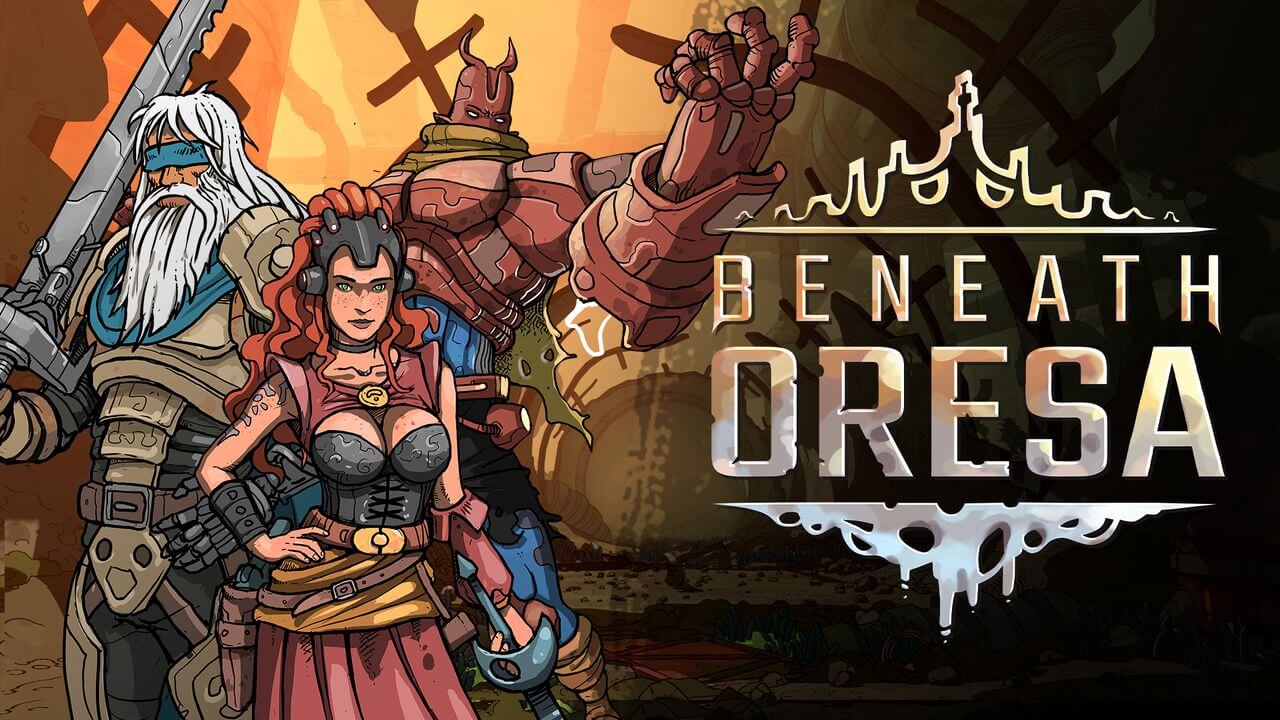I had the joy of getting to review one of the latest roguelike deck-builders, Beneath Oresa. You will find all of the standard features of a roguelike deck-builder, along with a few new ones. There is a lot to cover, so let’s jump right in.
In this Beneath Oresa Review I’m going to discuss:
Story
Oresa was once the city of the gods. But now that the gods are gone, all sorts of people have gathered in this once-great city. Some looking for help, some are offering services, and some are just looking for adventure. Ultimately, they are all drawn here to unravel what lies beneath Oresa.
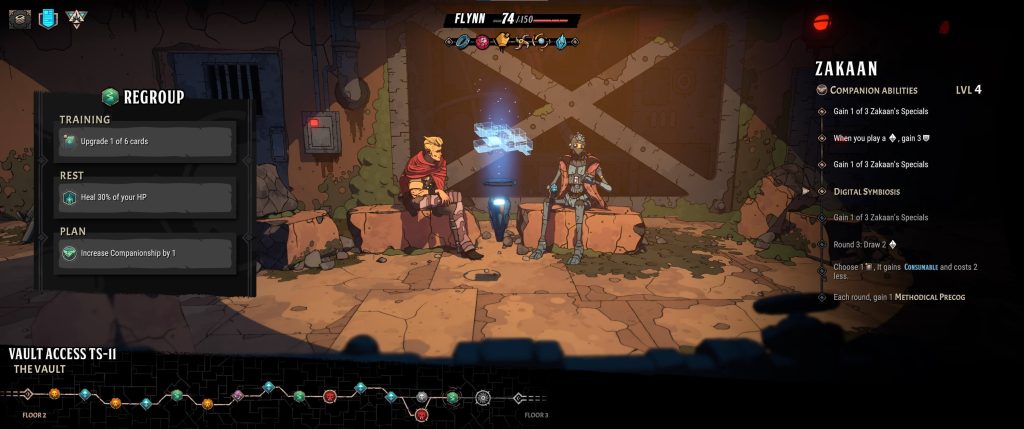
Gameplay
Beneath Oresa is primarily focused on combat, which is why the developer actually describes this game as a fighting roguelike deckbuilder. However, starting on the right foot can determine whether you have a successful run or not. That’s why I am going to take a little bit of time to focus on the setup before you get into a run. There are a few important decisions you need to make first.
Starting Setup
After starting a new game, you will be taken to the Agora. There are a few options that you need to select before your run begins.
Expedition & Architect’s Curse
In the Agora you will be selecting your Expedition as well as your level of Architect’s Curse. You will be able to pick what expedition to go on from the ones randomly available. These have three tiers of difficulty. All expeditions offer a bonus for the run, but the more difficult ones will have a disadvantage as well. The level of Architect’s Curse will provide some advantages or disadvantages to your run as well.
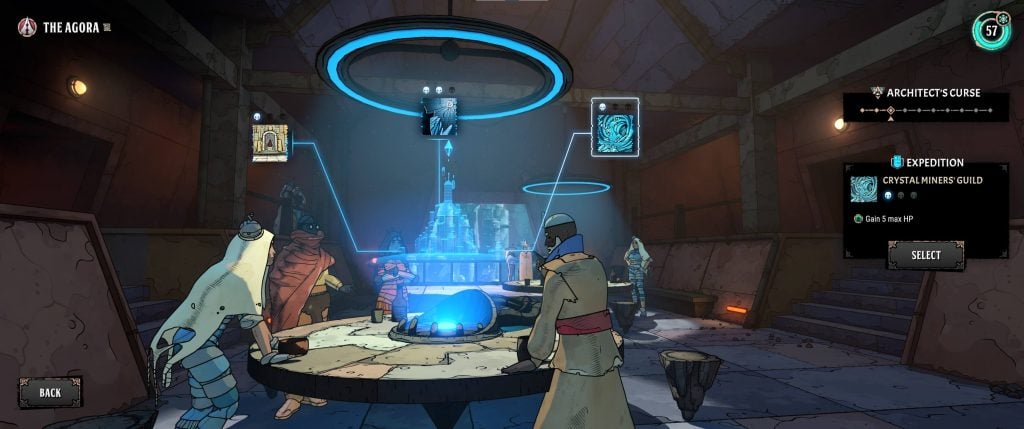
Factions
The next decision is what character to play as. There are 3 different factions to choose from, with 3 different playable characters in each faction. The factions all play quite differently;
- The Tainted Ones have a virus that they must manage. It can boost some cards, but it also inflicts damage at the end of each turn.
- House Aguca de Ferady focuses on building up charge to perform powerful counter-attacks that can defeat an enemy in a single blow.
- The Guild of the Ruinfarers is focused on ranged combat, which means they have to manage their ammunition. The ammo can trigger powerful attacks, but be careful because running out of ammo can mean no attack that round.
Companions
After deciding on what character to play as, you will move onto the final setup step. This step is choosing a companion for the run. There are different companions from each faction, and you can mix factions. There are even a few special companions for a couple of the characters.
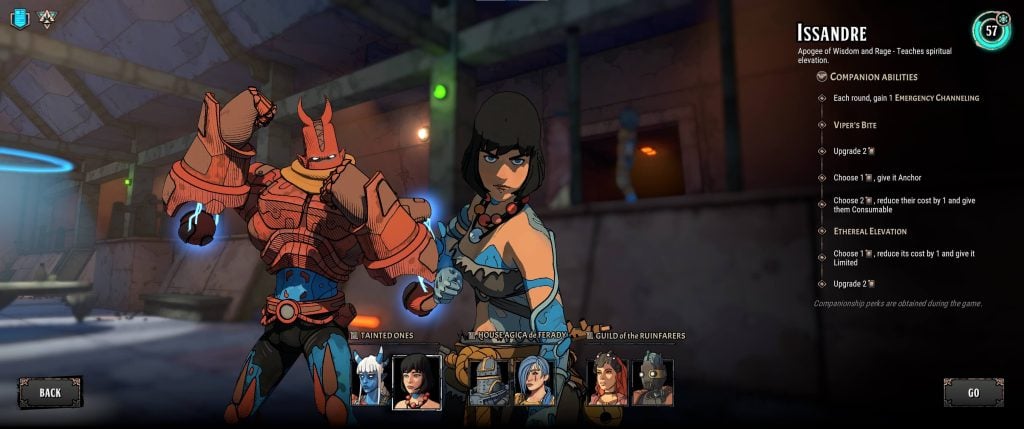
Each companion is going to provide an array of 8 abilities that can be passive or add new cards to your deck. An important thing to keep in mind, though is that these abilities only unlock during the run if you choose to increase the companionship. Something that I will mention again in a bit.
Combat
After you finish the setup, you will start your journey on the first of three floors. Your goal is to get to the third floor and defeat the final champion. Unlike most roguelike deckbuilders, you do not have a map with branching routes to choose your path from. The nodes are preset; however, you will get to decide what happens at each node along your path.
Nodes
For combat, you get to decide what advantage or disadvantage you want before the fight begins. At other nodes, you might decide if you want to heal your character, upgrade some cards, or increase your companionship to unlock your partner’s next ability. Every choice is vital because you don’t know when you might get one of those choices again. And choosing the wrong one could result in a brutal end to your run.
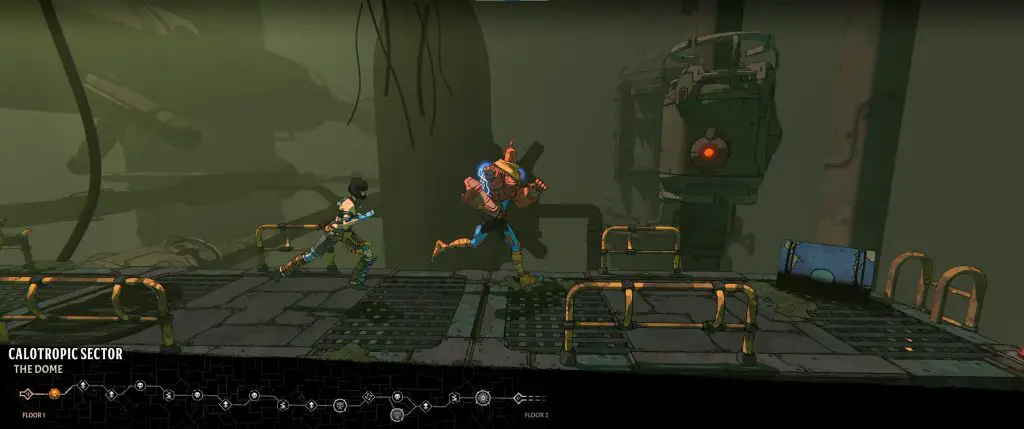
Upgrades
When you choose to upgrade your cards, sometimes it is from a handful of randomly selected cards and sometimes it is picking a card out of the whole deck. All of the cards have two options when upgrading. There isn’t a right and wrong option, but you will want to pick the one that best fits your play style. Would you rather go with the extremely powerful option that you can only use once per combat, or, would you go with the slightly weaker one that you can use every round? Sometimes, it can be a pretty tough decision.
Injectors & Antiqorums
Aside from cards, you will also find injectors and antiqorums along your run. Injectors are a very powerful one use items that can reduce the cost of cards or even give you two extra actions for the turn. You’ll have to decide if you want to save them for the champion at the end of the floor or use them to survive the next round in combat.
The antiqorums are passives that last the rest of your playthrough. They can make a big difference in combat. Some activate every round, while others trigger only from a specific situation, such as the first time you take damage each combat.
Dimensionality
Speaking of combat, let’s finally jump into it. One of the things that really makes Beneath Oresa stand out from some of the big roguelike deckbuilders, like Slay the Spire, is its dimensionality. Beneath Oresa’s 3D models look great, but it also uses a multi-zone battlefield. This means that the player is able to move around the space and take advantage of positioning.
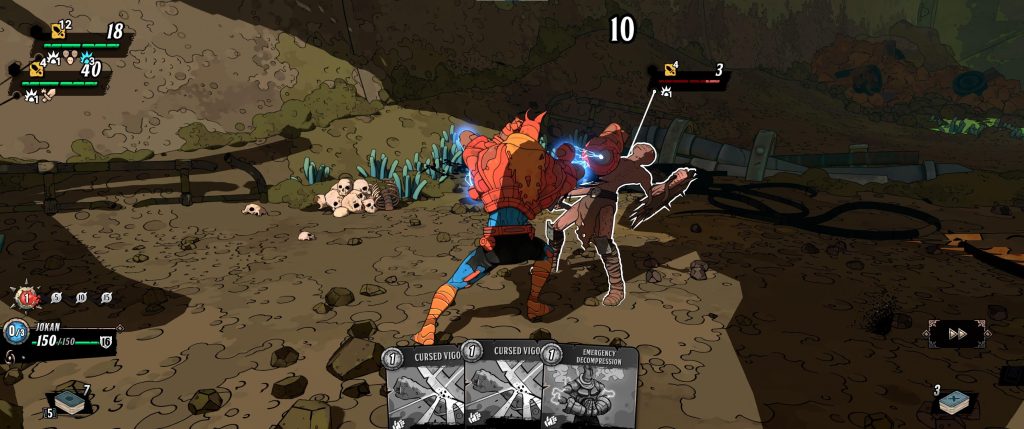
You can knock an enemy into the far zone. Then, set up some spikes for when they move back into your zone for a melee attack. There are also several cards that benefit from either the enemy being in your zone or in the far zone. So, positioning is something to always keep in mind especially if you are playing the ranged faction vs one of the melee factions.
Tiers of Combat
There are three different tiers of combat; the regular, the elite, and the champion fights. The lowest tier is usually pretty easy to get past with minimal health loss. The elite fights step up the difficulty by either having lots of enemies or some pretty tanky foes that can take a while to defeat. Finally, the champion fights are going to really test the deck that you built so far.
These fights are anything but easy and make quick work of a player with a poorly built deck. So make sure you are ready by the time you get to the end of each floor.
Visuals
This leads us right into talking about the visuals of the game. One of the biggest things that really makes Beneath Oresa stand out from similar games is its fluidity in combat. The ability to chain your attacks is important in this style of game, but to actually see that reflected in the characters’ movement was a pleasant surprise.
What do I mean? If you play the same basic attack back-to-back, most deck builders have the same animation: slashing left to right over and over. But the developers for Beneath Oresa took the time to go one step further.
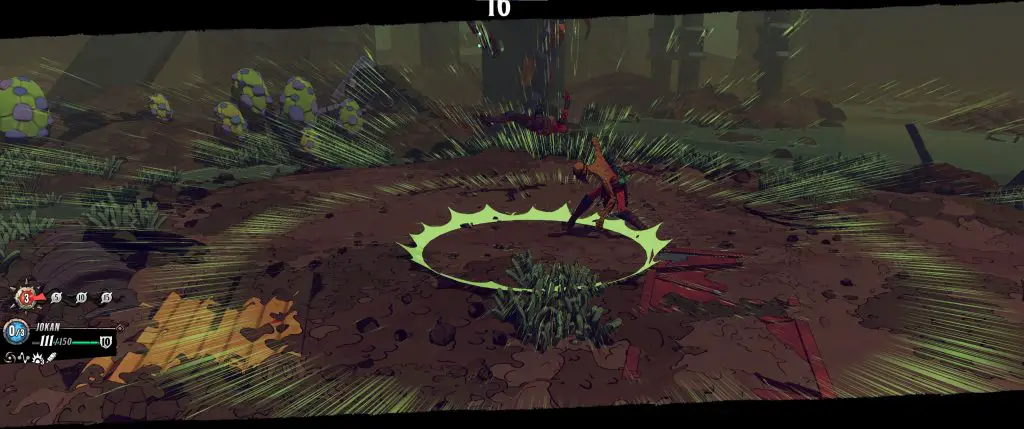
If you do 3 basic attacks back to back using someone with a sword, then they are going to slash left, follow through with a slash from the right, then follow through once more with a strike from the left in a very smooth animation. Not only does it look fantastic, but the game encourages it by going into slow motion right after a melee attack, waiting for you to play the next one. I’m not embarrassed to say that it definitely influenced the order I would play some of my cards.
Now, that fluid combat animation wouldn’t look very good if the characters didn’t look good while doing it. Every character model looks fantastic, though. I really like the art direction that the developer took on this one. It pairs well with all the different interactions and animations. There are even animations of your character exploring the map between nodes that look great. The developer went the extra mile with the visuals in this game and it really paid off.
Wanting More
After every run, there is a score for how you did that time around. You get points based on how far you got, what enemies you defeated, etc. This score gets added to your overall rating and unlocks various things at each level, such as characters, cards, and expeditions. The best part about it is that you get a score no matter how your run went. This encourages experimenting with different combinations rather than punishing you for trying an unlikely duo. There is a lot to unlock, but I am still left wanting. Two of the biggest things that I want to see in future updates and/or DLC are more companion interactions and more story.
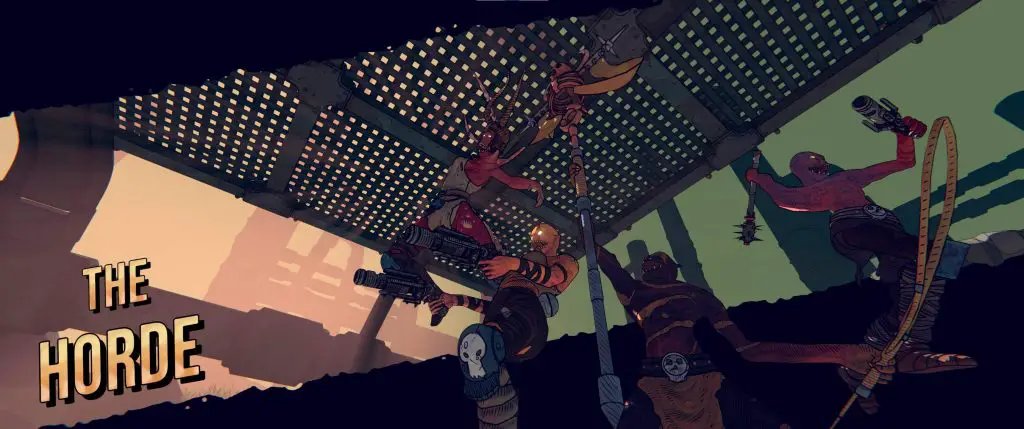
Let’s start with the companion interactions. I love the idea of picking a companion before the run starts. The right pairing can really make a big difference in combat. But, other than providing some additional cards and abilities, there isn’t much interaction from the companion in combat. What I would love to see are some animations where the partner comes in for a combo attack or a gunshot from the side of the battlefield. Something. I have done a lot of plays that max out companionship. I want that to pay off by having my partner come into the fight and help with the finishing blow in a champion fight.
Along those same lines, there is some small background text for each of the factions when you are selecting your character. I think it would be a really nice DLC to be able to play a side story for each of the factions. Or better yet, each of the characters. How they got to Oresa or what things were like where they are from. It would be a great way for the developer to be able to add more enemies and possibly some new playable characters as well. That is something I would happily spend money on.
Conclusion
So I don’t know if you could tell yet, but I absolutely loved Beneath Oresa. It was hard for me to write this review because I didn’t want to put the game down. Just one more run! I also couldn’t decide what to cut out so that this wasn’t a 20-page article. There is just so much to like whether you are a seasoned player of roguelike deckbuilders or new to the genre.
The game isn’t perfect, though. As I mentioned earlier, the game is designed around quick card play to see the awesome animations play in sequence. This can often make the interface quite messy and hard to tell if all of your passives triggered correctly. Sometimes, there are so many cards and animations on the screen that it is hard to tell what triggered from what.
I also think that the game does suffer from a bit of unbalancing. I am by no means a master of this game or the genre, but with some factions, I am able to get through the final champion fairly consistently, while others I have yet to do so. It could just be due to my playstyle though.
That being said, I still recommend checking this one out. So, whether you were on the fence during the beta or hearing about this game for the first time if you are a fan of roguelike deckbuilders, do yourself a favor and go check this game out on their Steam page.
This game was graciously provided by the developers at Broken Spear Inc.

